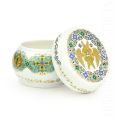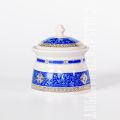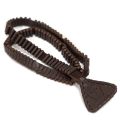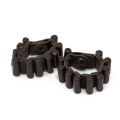This website uses cookies to ensure you get the best experience on our website. Read more
The Kamilavka: Ground Rules for Wearing It
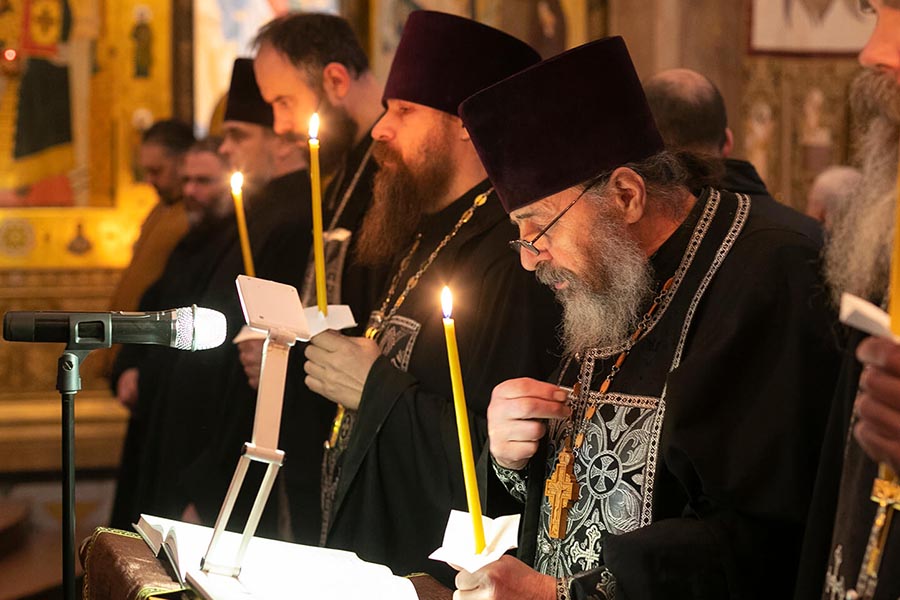 17Apr
17AprThe topic of today's posting concerns a clerical vestment called Kamilavka, a tall brimless head cover worn by Orthodox clergy. We hope you will find it engaging, particularly if you serve in jurisdictions where wearing one is the custom.
In the Russian Orthodox Church and several other Eastern Churches that share its tradition, a Kamilavka is an ecclesiastical award that recognises a clergyman's distinction and experience. Wearing it is a privilege typically granted by an archbishop. The use of the Kamilavka during church services is governed by a number of rules and customs. This post covers some of the most important of these.
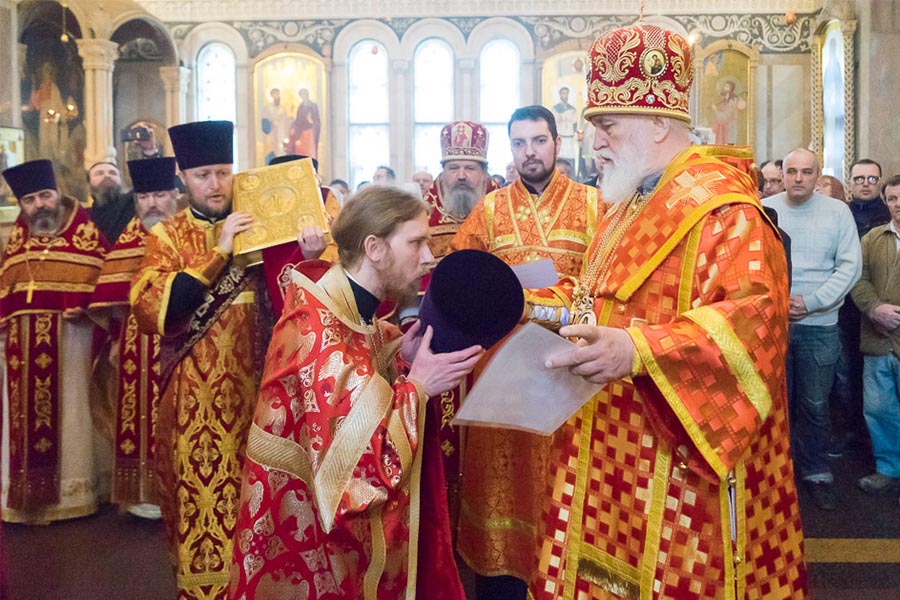 Award of a Kamilavka at St.Elisabeth Convent (Minsk, Belarus)
Award of a Kamilavka at St.Elisabeth Convent (Minsk, Belarus)
It does not take a clergy member an infinite amount of time to earn the award of a Kamilavka. In the Russian Orthodox Church, it can happen as early as six years after ordination as a priest. A deacon can earn a Kamilavka after a minimum of fifteen years of service.
After the award of a Kamilavka - which, in the custom of the Russian Orthodox Church can only be purple – the clergy are expected to wear it to every service as a part of their vesture (subject to a few exceptions), and also for special events, together with their cassocks.
Many are unsure when to wear it during a service, when not, and how to decide.
Some jurisdictions publish manuals on these matters. In most places, the clergy must rely on the advice of their more experienced or knowledgeable peers. Finding formal guidance can be a challenge. The Typikon offers only a few fragmented instructions (in Chapters 29, and 2, for example). Scholarly writings in Orthodox liturgics describe the practices of specific archdioceses, offer opinions on permissible variations and individual interpretations of the Typikon. Overall, opinions and advice vary greatly.
 Priests wear Kamilavkas during the Small Entrance
Priests wear Kamilavkas during the Small Entrance
For example, the Typikon instructs those present at the liturgy to bare their heads for the Small Entrance and Entrance with the Censer during Vespers. Some believe that this rule applies to everyone at the church, including clergy, and thus they must each remove their Kamilavkas. Others are convinced that it refers only to monks who are attending a service, but not participating in it.
In practice, the predominant tradition is to keep the Kamilavka on. As a compromise, some priests may remove it when venerating the icons of the Royal Gate or the Gospel and then put it back on after entering the Altar. Most, however, will keep their head covered, motivated perhaps by the wish to uphold the atmosphere a solemn moment. Entrance during vespers is a distinctive feature of festive services, Polyeleos and Vigil. As for the liturgy, the spirit of celebration fills every its aspect. The Small Entrance represents the triumph of Christ's preaching. Furthermore, the award of ecclesiastical distinctions – including a Kamilavka – sometimes takes place during the Small Entrance of the Hierarchical Liturgy.
One more example. The Instructional Message contains a fragment that some have interpreted as a call to remove the head cover for the litanies. However, this practice could negate the significance of the Kamilavka as a sign of distinction for a deacon, because saying the litanies is a key part of diaconal service. The evolution of the text over time may have led to ambiguities or inconsistencies, blurring the original meaning of the guidance.
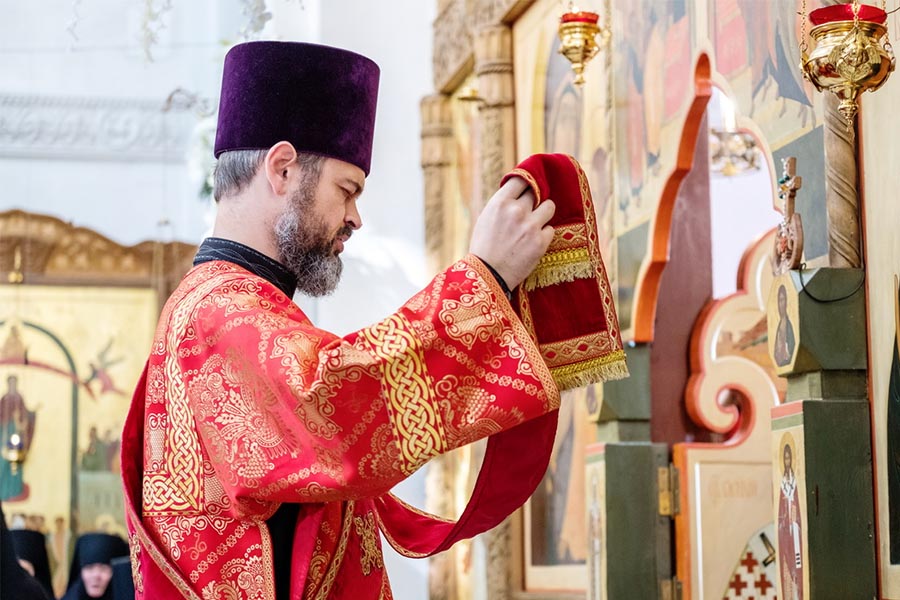 Protodeacon Oleg in Kamilavka at the litanies
Protodeacon Oleg in Kamilavka at the litanies
The Church tradition treats some rules of the Typicon as categorical (for example, head covers cannot be worn in the Gospel reading), while reinterpreting and extending others to support the most important aspects of the decent order (1 Corinthians 14:40).
In practice, the principles of oikonomia are frequently applied out of leniency (sometimes misplaced), to allow for specific circumstances or for the sake of some higher consideration, such as avoidance of unnecessary disruption or distraction.
Here we discuss some general rules for the wearing of Kamilavka, acknowledging fully that the details of their application may vary according to the traditions of each diocese.
Liturgy
The clergy may wear their head covers (including Kamilavkas) at the reading of the entrance prayers. Church sources treat this arrangement as the most preferable, assuming that the clergy come to church in a cassock and head cover, and proceed to the entrance prayers without delay.
Kamilavkas are removed after the Troparion "Door of Mercy...", and also for the veneration of the icons and subsequent prayers, and the clergy do not put them on until the Liturgy begins. In practice, most clergy leave their Kamilavkas in the altar as they go to the floor to read the entrance prayers. Making prostrate bows is also easiest without a Kamilavka, and older clergy especially need to keep their hands free during these moments.
Likewise, the clergy serve the Liturgy of Preparation (Proskomedia) without a head cover to maintain the spirit of piety and a prayerful attitude. Kamilavkas are not worn when the pieces of sacrificial bread are removed on the eve of the liturgy.
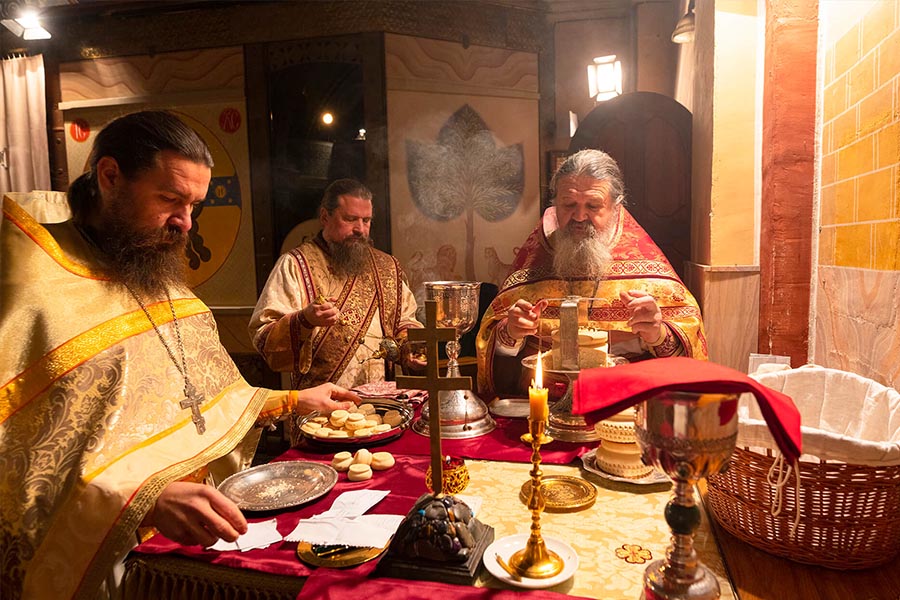 Not wearing a Kamilavka for the Proskomedia
Not wearing a Kamilavka for the Proskomedia
Before the beginning of the liturgy, the clergy put Kamilavkas on for the prayers "O Heavenly King..." and "Glory to the Lord in the highest..." and keep their heads covered until the Gospel reading (sometimes taking it off for the Small Entrance, as described above). The priest keeps the Kamilavka on until the chant of the Cherubic Hymn and the prayer "No one is worthy among them...". The deacon takes off his Kamilavka for the censing. Both remain bare-headed until the exclamation "Always now and ever...", and until they have placed the Holy Gifts on the offering table.
At the chanting of the hymn "Let our mouth be filled ...", the priest folds up the antimension and iliton (corporal), covers his head and, reads the prayer before the ambo, and concludes the liturgy.
As for the deacon, church sources give no guidance for this moment. In theory, the rules for priests should apply to deacons by analogy. But, as a general rule, a deacon exits the altar without a Kamilavka, as there is too little time to put it on properly before proceeding to the ambo. Many find it too inconvenient to wear their head cover for the ambo prayer, as they must take it off again for the blessing to consume the Holy Gifts and the consumption thereof.
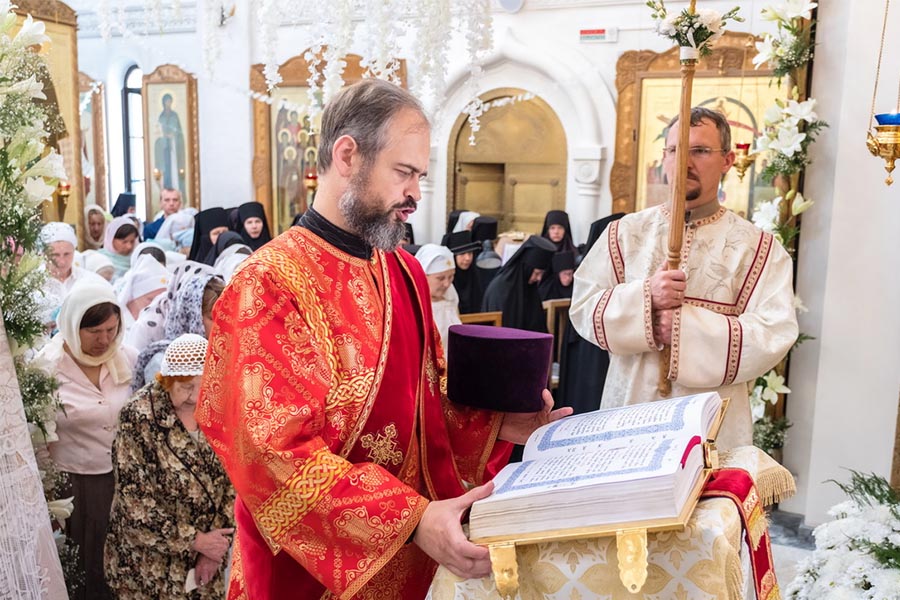 The clergy hold their Kamilavkas in their hands for the Gospel readings during Liturgy
The clergy hold their Kamilavkas in their hands for the Gospel readings during Liturgy
Liturgy of Presanctified Gifts
In another source, we find the following arrangement. It suggests that Kamilavkas should be worn for the entrance prayers, similar to the full liturgy. The clergy should put on the Kamilavkas at the beginning of the liturgy.
Kamilavkas should come off when the Holy Gifts are taken from the altar to the offering table, and not be worn until the beginning of the Litany “Let us all say” .
Then the clergy should cover their heads until the chant "Today, the powers of heaven..."
They should remove their head covers again until the hymn "Let our lips are filled...".
However, this arrangement overlooks the prostrate bows for the 18th Kathisma antiphons, which would be difficult to perform with a Kamilavka on. Also, a Kamilavka should be worn at the entry with a сenser, until the hymn "May my prayer be set before you like incense" is sung, and then removed until the Litany “Let us all say”.
In practice, because of the large number of prostrate bows and specific liturgical actions, the clergy often do not wear their Kamilavkas. They find that keeping their head uncovered helps them focus on the worship, the sacraments and the spirit of repentance that permeates the service.
Vespers, Matins and other services
As with the Gospel readings, clergy bare their heads at specific moments during vespers, matins and other services, including:
- The prayer "O Most Merciful Lord..." of the All-Night Vigil Litia (Artoklasia);
- Censing to the hymn "More honourable than the Cherubim" (or equivalent);
- Other prayers (e.g. of light, or of sixth psalms);
- Prayers during other church offices and Molebens, e.g. the blessing of the waters.
In practice, an exeption is made for the short prayers during liturgy antiphons, and for the prayers of the bowing of heads during Vespers and Matins.
The clergy follow these customs both as celebrants and as attendants.
 Consecration of the bread during an All-Night Vigil. Fr.Andrew's mitre is off
Consecration of the bread during an All-Night Vigil. Fr.Andrew's mitre is off
Before taking out the Gospel for the Polyelaion, the deacon leaves his Kamilavka at the altar and puts it back on after re-entry. On Sunday, when the Gospel is left on the central analogion, he relies on the help of an altar servant to carry the head cover from the altar.
It is a local - and laudable - tradition to bare one's head for the Great Doxology, which is at least equal in significance to the hymn "More Honourable than the Cherubim".
The clergy are also expected to wear a Kamilavka to meetings with the archbishop and other important engagements.
 The clergy wear their Kamilavkas for an annual meeting at the diocese of Minsk
The clergy wear their Kamilavkas for an annual meeting at the diocese of Minsk
The rules for wearing a Kamilavka are numerous, and this post covered the most important of them. Specific practices may vary across the dioceses. The attitudes are also different - some apply the rules with lenience, others are more demanding. For those of my brethren who are apprehensive about making mistakes, here is a word of reassurance. Wearing a head cover – and keeping it off - are both symbols of humility, an essential part of our salvation. We should always strive to match our external actions to our inner virtue.










